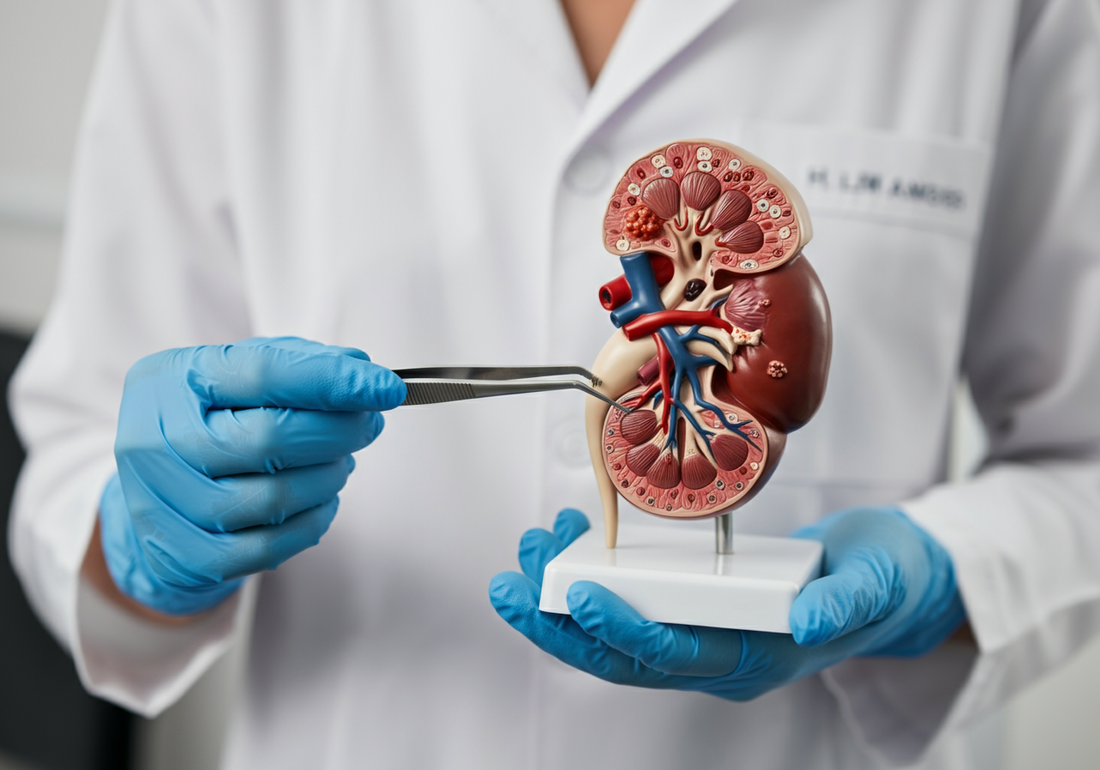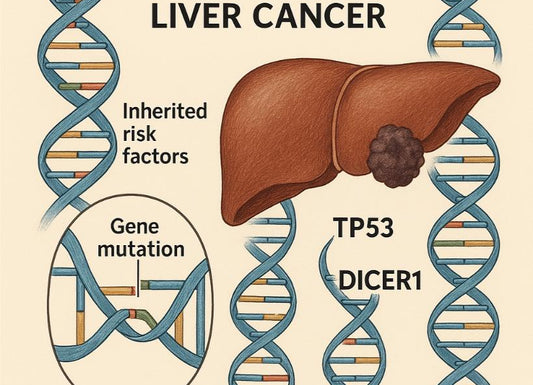How Bad is Stage 3 Kidney Disease?
 Written By
Abel Tamirat, MD
Written By
Abel Tamirat, MD

Stage 3 kidney disease means your kidneys are working at about half their normal level. It’s not kidney failure, but it’s not mild either. At this stage, damage is usually permanent—but you can slow it down or stop it from getting worse.
This guide breaks down what stage 3 kidney disease means, how it’s diagnosed, what symptoms to watch for, and what you can do to stay healthy.
What is stage 3 kidney disease?
Stage 3 is part of a 5-stage scale used to track chronic kidney disease (CKD). It’s defined by your estimated glomerular filtration rate (eGFR), which measures how well your kidneys are filtering waste.
Stage 3 CKD is divided into two parts:
-
Stage 3a: eGFR between 45–59
-
Stage 3b: eGFR between 30–44
Healthy kidneys have an eGFR over 90. So stage 3 means moderate kidney damage.
If you’re unsure about your stage, our guide on what stage is my kidney disease provides clarity and practical advice.
Is stage 3 kidney disease serious?
Yes, it’s serious—but not hopeless.
At stage 3, the damage is usually permanent, and kidney function is moderately reduced. But most people at this stage do not need dialysis and won’t for many years if they manage it well.
This stage is your window to act. You can still protect your remaining kidney function, avoid complications, and live a normal or near-normal life.
Want to know what treatment options exist today? Read about the latest treatment for chronic kidney disease and how it may help you.
Symptoms of stage 3 kidney disease

Some people have no symptoms in early stage 3. But as it progresses, common symptoms may include:
-
Fatigue or weakness
-
Swelling in hands, feet, or ankles (edema)
-
Foamy or dark-colored urine
-
Muscle cramps
-
Trouble sleeping
-
Dry or itchy skin
-
Increased urination, especially at night
-
High blood pressure
These symptoms may be subtle at first. Some are caused by waste buildup in the blood or fluid imbalance.
Certain visual signs, like kidney disease nail changes, might also appear and can be early indicators of health decline.
How it’s diagnosed
Stage 3 kidney disease is diagnosed with two main lab tests:
-
eGFR (estimated Glomerular Filtration Rate)
-
Based on your age, sex, race, and blood creatinine levels
-
Normal: 90 or above
-
Stage 3: 30–59
-
Urine albumin-to-creatinine ratio (ACR)
-
Measures how much protein is leaking into the urine
-
Higher numbers suggest more kidney damage
You’ll likely have repeat tests over time to confirm CKD and track progression.
Learn about the normal urine protein/creatinine ratio and how it relates to kidney health monitoring.
What causes stage 3 kidney disease?
The most common causes are:
-
Diabetes (high blood sugar damages kidney filters)
-
High blood pressure (strains the blood vessels in the kidneys)
-
Autoimmune conditions (like lupus or IgA nephropathy)
-
Polycystic kidney disease (a genetic condition)
-
Repeated kidney infections or blockages
-
Long-term use of certain medications (NSAIDs, some antibiotics, PPIs)
If the cause is caught early and treated, further damage can be slowed or prevented.
If you’re managing both diabetes and CKD, this 7-day kidney disease and diabetes meal plan can help support your kidneys.
Complications of stage 3 kidney disease

At this stage, complications can begin to appear. These may include:
-
Anemia (low red blood cells)
-
Bone weakness (due to calcium and phosphate imbalance)
-
High blood pressure
-
Heart disease risk
-
Electrolyte problems (like high potassium)
Your doctor may order regular labs to monitor these issues.
You might want to understand the signs and risks of protein in kids' urine, which could be early indicators in young patients.
Can stage 3 kidney disease be reversed?
No, the damage is usually permanent. But you can stop or slow progression. Many people live with stage 3 for years—sometimes decades—without needing dialysis or transplant.
The goal is to:
-
Prevent progression to stage 4 or 5
-
Manage symptoms and complications
-
Reduce strain on the kidneys
Discover how to reduce proteinuria, one of the biggest contributors to CKD progression.
How fast does it progress?
Progression varies. Some people stay in stage 3 for many years. Others progress more quickly, especially if their blood pressure or diabetes is not well controlled.
Risk factors for faster progression include:
-
Uncontrolled blood sugar or blood pressure
-
Smoking
-
Poor diet (high salt or processed foods)
-
Frequent infections
-
Proteinuria (high levels of protein in urine)
How to slow or stop progression
You can take steps to protect your kidneys and stay in stage 3:
1. Control blood pressure
-
Aim for <130/80 mmHg
-
Use prescribed medications (ACE inhibitors or ARBs)
2. Manage diabetes
-
Keep A1C in target range (usually <7%)
-
Watch carbs and sugar intake
3. Eat kidney-friendly
-
Limit sodium (under 2,000 mg/day)
-
Moderate protein (ask your dietitian)
-
Avoid phosphate additives and high-potassium foods if needed
4. Quit smoking
-
Smoking speeds up kidney decline and raises heart risk
5. Stay active and maintain a healthy weight
6. Avoid kidney-stressing meds
-
Talk to your doctor before using NSAIDs (like ibuprofen)
7. Monitor and treat complications
-
Anemia, bone health, potassium, acid levels
Do you need a kidney specialist?

Yes, most people with stage 3 CKD should see a nephrologist (kidney doctor). They can:
-
Help identify the cause of kidney damage
-
Monitor lab trends over time
-
Adjust medications safely
-
Coordinate with your primary care provider
Some people wonder whether lifestyle choices contribute—read about whether alcohol causes kidney disease and how to limit further damage.
Can you live a normal life with stage 3 kidney disease?
Yes, with good management, many people live normal or near-normal lives for years.
You may need to:
-
Get regular labs and checkups
-
Follow a kidney-friendly diet
-
Stay active
-
Take medications
-
Make lifestyle changes
It’s not always easy—but it is manageable.
When does dialysis start?
Dialysis is usually not needed until stage 5, when eGFR drops below 15. Some people may start earlier if symptoms are severe.
With stage 3, your goal is to delay or avoid dialysis entirely. Early action makes this more likely.
Takeaway
Stage 3 kidney disease means your kidneys are moderately damaged. It’s serious—but not a death sentence. At this stage, you have a chance to slow or stop progression, avoid dialysis, and protect your long-term health.
You may not feel sick, but silent damage is happening. Monitoring your labs, making diet and lifestyle changes, and working with a care team can help you stay stable.
It’s your warning sign—and your opportunity to take control.
Worried about your kidneys? Try our kidney health tracker or subscribe to our newsletter for tips, recipes, and updates.
Related Resources
References
American Kidney Fund. (2021, October 29). Stage 3 chronic kidney disease (CKD) causes, symptoms and treatment. https://www.kidneyfund.org/all-about-kidneys/stages-kidney-disease/stage-3-chronic-kidney-disease-ckd-causes-symptoms-and-treatment
Chronic kidney disease - Symptoms and causes. (2025). Mayo Clinic. https://www.mayoclinic.org/diseases-conditions/chronic-kidney-disease/symptoms-causes/syc-20354521
Felman, A. (2023, August 14). What to know about stage 3 kidney disease. Medical News Today. https://www.medicalnewstoday.com/articles/stage-3-kidney-disease
Neild, G. H. (2016). Life expectancy with chronic kidney disease: An educational review. Pediatric Nephrology, 32(2), 243–248. https://doi.org/10.1007/s00467-016-3383-8
NHS. (2017, October). Chronic kidney disease. https://www.nhs.uk/conditions/kidney-disease/

Dr. Abel Tamirat is a licensed General Practitioner and ECFMG-certified international medical graduate with over three years of experience supporting U.S.-based telehealth and primary care practices. As a freelance medical writer and Virtual Clinical Support Specialist, he blends frontline clinical expertise with a passion for health technology and evidence-based content. He is also a contributor to Continuing Medical Education (CME) programs.



